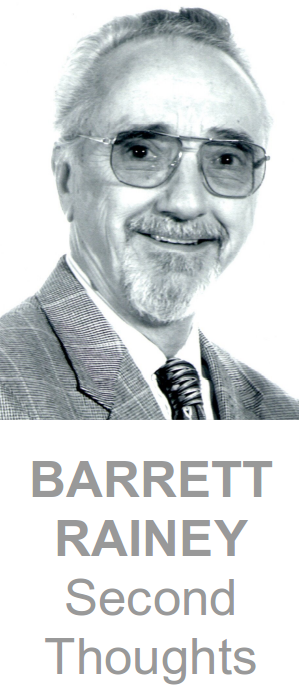
When we talk about politics, we find quite often that we aren’t talking about the same things. We are actually talking past each other.
We address political and social subjects as though some of us speak Urdu and others Swahili, so few of us actually absorb what those from different perspectives are saying and thinking. But we seldom admit we may be misunderstanding each other.
This sounds like an old problem, but the extent of it, and the way we experience it now, is relatively new.
Half a century ago, Americans mostly drew from a common well of public and political speech. Thus, in nearly all cases, we understood in similar ways what was being communicated.
We might disagree — and quite often did — about what conclusions to draw, what moral and ethical standards to apply, and what priorities to set. But we spoke, generally, the same language.
A person might be more sympathetic to the extremely different Joe and Eugene McCarthy. But what each of them said or meant never was seriously in doubt.
Today, words, phrases, concepts and even proper names now mean different things depending on which bubble you live your life in. That led me to reflect on the issue at more length in a newly released book, “What Do You Mean by That? How forked tongues and twisted words have taken over our politics.â€
What is an “elite†and who is in it? Who is a “patriot†and what makes him or her so?
What do we mean by the “media?†Do its various elements have an agenda, and if so, what is it? (Different parts of “the media†can have different goals, of course.)
In the United States, the Constitution provides a definition and a means of determining what constitutes “treason,†but political advocates on both left and right toss the word into many other contexts.
I’ve been writing about politics, mainly for newspapers, for more than 40 years. And the job of communicating the same thoughts about the subject has gotten trickier with time. It has become necessary to take a hard look at the words we’re using and what we mean by them, because we don’t all mean the same thing.
Many are the people in America who use these words and ideas and toss them about as if everyone else conceives of them the same way. We typically swim in our own currents and use the words and their definitions we’re most familiar with, often unaware that others, many others, in our society are operating with entirely different dictionaries.
The result is, we do not hear the same thing.
A couple of years ago, a writer named Howard Polskin, after years in journalism and corporate communications, launched a website and e-mail publication called TheRighting. Its mission is to collect writings from the right side of the political spectrum “to help inform middle-of-the-road and liberal audiences about stories and viewpoints not on their radar screens that are shaping political opinion across a wide swath of America.â€
What he collects are not differing philosophical views, but rather whole topics that never reach non-ideological media. And yes, I’ll assert flatly that there are such.
Entirely different worldviews are being formed out there, in the manner of a alien world creating sci-fi novelist. Many of the most intractable of our conflicts happen when these differing worldviews prevent us from making connections.
Few subjects have remained as heated, and less susceptible to mediated resolution, for as long as abortion. One problem is, the people in the opposing trenches define themselves in ways that do not link up at all — “pro-life†vs. “pro-choice†— with no hope either side will take seriously the core concerns of the other.
There’s no engagement. And how could there be, when one side is thought to be “anti-life†and the other “anti-choice.â€
The problem comes in different ways. What does a word or phrase mean — say, patriot, sovereign citizen, proper role of government, Medicare for All?
Patriot was a term in disrepute a couple of centuries ago. You didn’t want to be called one, especially if you were a politician.
Over time, it evolved into a descriptor of pride, then gained some use in sarcasm. More recently, it’s gained a lot of use — with no ironic intent — among extremist, militia and especially anti-government groups.
What you mean by “patriot†depends a great deal on who you are and who you’re addressing. And in the meantime, it is continuing to evolve.
Sometimes words we think of as being clear have developed split meanings — different meanings depending on where our allegiances lie.
Who is a Christian? Different people who call themselves Christian extend the word in very different ways, some broadly, some narrowly.
All of that has political as well as religious implications in this country.
Even more political than that, who or what is an “elite?†Some people apply the term to the wealthy and powerful, others to people with certain views, attitudes or backgrounds.
A more obvious example is “values.†Most people think values are important, but they don’t all celebrate the same values by any means.
There are new creations that pop up out of almost nowhere as well, such as “incel,†“fash,†“red pill,†even the better-known “#MeToo,†with little attempt to make them part of the larger cultural vocabulary. They’re intended as elements of language for insiders, not language for true communication.
Other words are used as epithets, such as “snowflake,†“enemy of the people†and “cuckservative.†Some of these can be turned around and used against their originators as well.
For some years, “snowflake†was a mainstay of message boards on the right. Now it is being increasingly used by those on the left.
Then there are growing uses in our political talk of academic-sounding terms — “cultural Marxism,†“stochastic terrorism,†“integralism†and “intersectionality.†They sometimes have slippery definitions almost begging to be misunderstood.
Many words and phrases are used by one element, but not another. Take “underachiever,†“red pill,†“real America†and “owning the libs.†They are used essentially as markers, as indicators, to suggest to a reader the stance and viewpoint of the writer.
That can work as long as you’re familiar with the overarching point of view. Otherwise, no.
The phrase “liberty-minded†might seem open and vague to many people. But to those who use it most, it has a highly specific and concrete meaning.
There is hope. If we think about these words carefully and demand definitions — asking, “What do you mean by that?†— it’s possible for us to restore more meaningful communication.














